Daniels Akpan – Nigeria’s Technical and Vocational Education Programs: Insights and Analysis
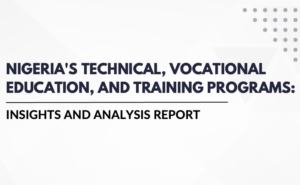
In recent years, the nonprofit sector in Nigeria has expanded as more people and groups have started to address the nation’s social, economic, environmental, and educational challenges. This sector is supported by legal frameworks that include the Companies and Allied Matters Act and the Nigerian Code of Corporate Governance, which provide guidelines for the registration, governance, and operations of nonprofit organizations. Despite these laws, this complex and ever-changing industry is still challenged and impacted by numerous factors, including the nation’s political, social, and economic conditions as well as its historical and cultural context. Obstacles like low funding, shoddy infrastructure, and regulatory restraints still limit the contributions of this sector in addressing social issues in the country. As Nigeria seeks to reclaim its position as the giant of Africa, efforts are being undertaken to efficiently regulate and administer social development, and the significance of its nonprofit sector is widely acknowledged as a key element for that work. To help chronicle Nigeria’s collective work, this report will first examine the technical and vocational education programs in Nigeria and offer insights and analysis on the sector based on a range of sources, such as academic research, policy papers, and interviews with nonprofit leaders and experts. It will then highlight one program by analyzing its market, discussing related regulatory frameworks, highlighting the impacts and challenges related to the program, and finally providing recommendations for institutional improvement and government policy direction.
Megan Byers – InstructSTEM
![]()
STEM education is constantly evolving, and it is crucial for instructors to stay up to date with the latest educational best practices. Designed to help bridge the research-to-practice gap, InstructSTEM is a professional development course that provides a synthesized and accessible introduction to evidence-based pedagogical practices for high school and college STEM instructors. The modules will cover a range of topics in the learning sciences along with instructional practices, identifying learner characteristics, and course development. The pace and content will be tailored to the instructors’ prior knowledge, performance, and interests. For example, instructors will take assessments prior to and after engaging in learning activities for each topic, and the corresponding activities will be modified based on their performance. Instructors will also develop deliverables relevant to the STEM content area(s) they teach and receive feedback and guidance from their peers and course facilitators. This personalized and adaptive course has the potential to significantly improve STEM instruction by equipping instructors with the tools and knowledge needed to implement effective educational practices in their context and subsequently boost STEM student performance and retention.
Kelsey Cotter – Using Technology to Support a Neurodiverse Classroom
This course prepares general education high school teachers to support neurodiverse students diagnosed with specific learning disorders that include impairments in reading and written expression. General education teachers meet the needs of a wide range of learning abilities, and they are often not given resources to learn more about their learners and alternative ways to support their needs. This course provides an overview of Psychoeducational Reports along with detailed learner profiles for students with reading and writing deficits. After learning more about these students, teachers will be introduced to technologies that can support them in the classroom. The culminating activity will ask teachers to use the knowledge they have gained to create a technology-focused learning activity for students.
Dorentina Dedushaj – The Potential to Revolutionize Language Learning through Robotics

Through the emergence of robotics in education, we can transform the way the teaching and learning of languages take place. The use of humanoid robots has the potential to enhance language acquisition and retention. Recent advancements in robotics have enabled the combination of artificial intelligence (AI), natural language processing (NLP) technologies, speech recognition, and facial recognition technology, and given humanoid robots the ability to understand and interact with students in an intuitive way. These humanoid robots can now serve as conversation partners or language tutors that can provide personalized language practice and real-time feedback. Furthermore, by offering personalized learning experiences it has the potential to increase engagement, motivation, and improve language learning outcomes. This emerging industry has the potential to impact millions of schools, students, and educators worldwide. SoftBank Robotics is an innovative company that is leading the way in this developing field, it provides social humanoid robots that are designed to engage with humans through conversation. The NAO robot, a SoftBank Robotics product, has the capability to interact through conversations and provide feedback on children’s language skills while serving as an aid to improve their pronunciation and grammar skills. Additionally, humanoid robots offer a cutting-edge approach to language learning and could be used as an innovative educational tool that provides an opportunity to overcome language learning barriers and challenges. The aim of this report is to first describe the industry of robots being used for language learning. It will then assess the strengths and weaknesses of SoftBank Robotics, identify any threats, and identify opportunities to revolutionize language learning and remain a leader in this industry with the goal of redefining what it means to educate.
Izzete Encarnacion – Connecting Learners to the international community
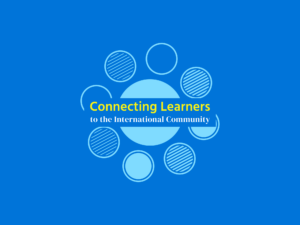
International Teachers Exchange Programs for Foreign Language Development industry allows international teachers to teach full-time in accredited public and private U.S. primary and secondary schools. These teaching opportunities include language immersion programs aimed at promoting cultural exchange and enhancing mutual understanding between the U.S. and other countries. These exchange programs are important because they help teachers sharpen their professional skills and participate in cross-cultural activities in schools and communities. In addition, this industry helps fill 36,504 teaching positions across the U.S., with the highest demands in World Languages. In North Carolina, there is a current investment of $121.4 million for international teachers, and around 2,100 are hired annually for its 229 dual-language programs. Participate Learning is a leading company that has been recruiting international teachers for more than 30 years. They partner with school districts to offer ambassador programs, dual language programs (Spanish and Mandarin), and global leader programs in North Carolina, South Carolina and Virginia. In this report, I will first provide an analysis of the impact that Latinx international teachers have on their Spanish Curriculum before focusing on ways that Participate Learning can strengthen its partnership with teachers and reduce areas of opportunities in its service.
Emma Goldin – Camp Counselor 101

Camp Counselor 101 is a professional development course for onboarding camp counselors before the summer camp season starts. A 2022 study reported that 28% of children and adolescents reported having feelings of anxiety since the start of the Covid-19 pandemic. This course is important because children develop differently over the years and camp counselors should be prepared to help them through these changes. The learners for this course are ideally college-aged individuals who are becoming camp counselors for the first time. Throughout the course, they will gain knowledge and skills including working with children, how to help campers through homesickness, strategies for dealing with mental health issues in campers, psychological development of different ages of campers, and how to help teenage campers through puberty. The course will feature different kinds of activities like interactive lecture videos, infographics, surveys, and quizzes; these activities will include innovative ways to engage learners including a discussion forum that utilized 360 videos as a way to share content.
Zepeng Li – Exploring the Potential of Virtual Reality in K-12 Education: A Customer Segmentation Analysis

This report investigates the potential of Virtual Reality (VR) technology in K-12 education, with a focus on customer segmentation across elementary, middle, and high schools. It examines the current state of VR in education through market research, estimating its market size and identifying key players in the field. A literature review is used to outline the benefits and challenges of incorporating VR into teaching and learning while discussing how VR can enhance student engagement, motivation, and learning outcomes.The report will then profile lenovo, a prominent player in the VR industry. Specially , it will in educational settings and strategies for integrating VR in the classroom. The report conclude with recommendations for Lenovo to improve their offerings, in order to enable institutions and policymakers to leverage VR for enhancing student learning experiences.
Xinjuan Liu – Happy English Pocket

Many Chinese families begin raising their children to be bilingual during their language-sensitive period, from 0-5 years old. Many families choose to have each parent speak with their child in one specific language and each parent speaks only one language. The one-person-one-language strategy makes it possible for children to acquire two languages successfully and be bilingual. While research has shown that sufficient language input and exposure can profoundly affect a child’s language acquisition, the challenge is that in China, where the native language is not English, children lack an English-speaking environment.
Enter Happy English Pocket, an audio device filled with English content for 0-5 years old children that provides a rich English language environment. Its hardware will present a cute appearance, be made of baby-friendly materials, and be drop-proof and waterproof. Happy English Pocket will have a high-quality built-in audio speaker, and the product will be intuitive, as it only includes two buttons, which are volume and switch, so parents can immediately use it with the children, right out of the box! For the software, the product will have rich content recorded materials, including audiobooks and nursery rhymes. The content will be age-specific. The audio content will also be themed-specific, focusing on vehicles, animals, numbers, shapes, fruits, vegetables, colors, families, and alphabets. With this device, children will be exposed to an English-speaking environment while they are busy playing, so it will become an essential supplement for children who are on their way to bilingualism. Currently, the Happy English Prototype is being built, and it will be ready for market in 6-12 months.
Jane McDaniel – Substance Use Prevention Education for America’s Youth

In the 1980s, “Just say no!” was the slogan that defined substance use prevention education for adolescents. The Drug Abuse Resistance Education (D.A.R.E.) curriculum was a foundational component of the country’s plan to prevent teenage drug use by promoting an abstinence-only approach. Yet, despite the curricular implementation in 75% of American classrooms, research proves the program was highly ineffective. Most notably, the drug epidemic is more prevalent than ever, with 46.7 million Americans aged 12 and older meeting the criteria for having substance use disorder.
Still, exposure to substance use prevention curriculum is more important than ever for teens, as overdose deaths are on the rise, particularly for the 12-17 year old age group. The Safety First curriculum, out of Stanford Medicine’s REACH Lab, is an innovative approach to substance use prevention education and is rooted in realism and harm-reduction. The curriculum is scientifically accurate, compassionate, interactive, and uses well-known educational strategies and technologies like simulations and Kahoot. Potential outcomes for learners include the consequences of substance use, the role of mental health in substance use, and in the reality of teenage drug experimentation. This report will explore the history and impact of youth substance use education initiatives. Following, it will evaluate the Safety First curriculum in depth, including a SWOT analysis and the recommendations for remaining relevant and engaging to the ever-changing needs of America’s young learners.
Andrea Melendez – The Gamification of the Language Learning Industry
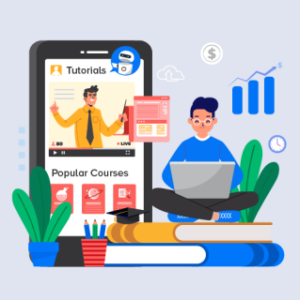
The language learning industry has experienced rapid expansion through the gamification of its offerings in recent years. According to a report by MarketsAndMarkets, the gamification sector is expected to grow at a Compound Annual Growth Rate (CAGR) of 27.4% from 2020 to 2025. This growth is fueled by the advantages technology brings to language learning, such as increased motivation, personalization of learning, and immediate feedback. The effectiveness of gamification in language learning has been studied extensively, with research showing that it has a positive effect on intrinsic motivation and engagement, and reduces extrinsic motivation (Vlachopoulos & Makri, 2017). Overall, gamification has proven to be a fun, interactive, and effective way for students to learn a new language. In language learning technologies, Duolingo is a language-learning application that has been at its forefront, with over 500 million downloads since 2021. This report will provide a synopsis of the language learning industry, profile Duolingo, and conclude with recommendations on how Duolingo can continue to grow while ensuring best practices are used for language learning.
Austin O’Connor – Exploring EdTech and Khan Academy’s Influence on ARS
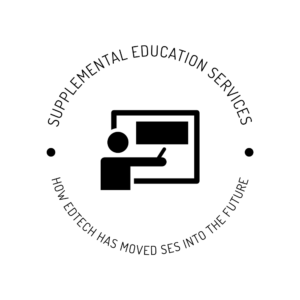
The education industry and its collection of organizations and businesses that provide products and services to enhance the quality of education for students and faculty has grown rapidly in the past couple of decades. This industry has several sub-sectors, such as academic resource services (ARS). These services are aimed at providing supplemental education to students outside of the classroom. While working to improve the issues of equity in education, ARS is important because it bridges the gap between primary and secondary education to help students reach their goals at the highest levels. For example, students who are struggling to gain an academic concept in the classroom can use ARS when they utilize extra peer tutor services or edtech. Although ARS is only a subsector of the education industry, it is still massive and estimated to be valued at $2.2tr in 2023.
While there are multiple ARSs in education, one of the most popular is Khan Academic. As written in Forbes, Khan Academy is one man, with one computer, who has managed to impact over 10 million students. All for free. In fact, Khan Academy has set the gold standard for ARS companies to follow and has been evolving rapidly. Through this report, it will first describe the impact and size of ARS in education before profiling Khan Academy. In the profile, the report will cover the different aspects of the learning software and how it aims to help various students using a free business model. We will examine its reach, its demographics and how it works as a whole.
With its evolution, there are many products and services that have been invented to replace faculty and help students both at home and in the classroom. This makes it a player that caters to millions of students, teachers, and ARS accommodators. After thoroughly examining Khan Academy, its rise to success, and the overall impact it has had on students across the world, it is likely that EdTech will prove to be the top subsector worth investing in within the education industry because of its ability to assist students of all financial and racial demographics. As one of the top used edtech software, it is important to examine how it became accessible to students across the country at a minimal cost and take notes on how other edtech companies can follow its lead.
Nate Orecchio – The Computer Science Intelligent Tutoring System

With the recent initiatives to teach Computer Science (CS) in K-12, many schools are finding themselves without the infrastructure, funding, or trained teachers required to properly instruct students in CS. While there are several tools available for teaching CS, many of them are not intuitive, do not collect data reflective of student learning, and their cost outweighs their instructional value. However, one group of research-backed tools that offer teachers the ability to provide students more opportunities to practice and receive feedback on solving problems are Intelligent Tutoring Systems (ITS). Yet, even amongst the many CS tools available, there is not an ITS for Computer Science. In this project, a CS ITS will be developed that affords K-12 students the opportunity to practice foundational coding problems and receive automated feedback/help based on their performance. The system will collect data on the students’ step-by-step progress and their willingness to seek help. This data, accompanied by solid theory, will provide insights into how students are learning foundational CS concepts. Ultimately, this will be developed and made available to teachers and students to better inform them about their progress in grasping foundational CS concepts.
David Russo – MotoMastery
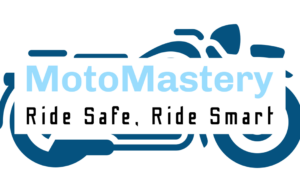
The MotoMastery Motorcycle Course is a meticulously designed, 10-module program aimed at equipping aspiring motorcyclists with the necessary skills and knowledge to safely navigate the world on two wheels. Developed through user research and insights from experienced riders in the community, the course identifies key areas where new riders need the most assistance and incorporates effective instruction to address these challenges. This comprehensive course readies participants to complete the Motorcycle Safety Foundation (MSF) course, ace the written DMV exam, and establish a solid foundation in motorcycle operation. Course modules encompass key motorcycle skills such as bike controls and operation, maneuvering techniques, and developing situational awareness and a safety mindset. Learner progress is assessed through frequent interactive assessments, while the integration of immersive technologies will provide engaging learning experiences. The self-paced course structure offers flexibility, allowing learners to complete the program at their convenience and from any location. Instructional materials comprise professional quality videos, step-by-step guides, and interactive drills that will be accessible via a user-centered platform. MotoMastery offers a well-rounded learning experience, grounded in real-world scenarios and expert insights, that emphasizes safety and practical skills that will empower riders to embark on their motorcycling journey.
Jackie Russo – The Future of Educational Publishing: A Look at McGraw Hill’s Position

The publishing industry plays a critical role in the field of educational innovation by producing high-quality learning materials. This industry impacts a wide range of stakeholders, including students, educators, schools and universities, parents, along with the government bodies responsible for education policy and funding. Driven by advances in technology and changing pedagogical approaches, the industry has evolved significantly over time. With the educational publishing industry being valued at over $10 billion in the United States and with substantial growth projected for the future, it impacts the lives and education of millions of people.
In this industry, McGraw Hill is one of the leading players with revenues of $1.8 billion in 2022 and over 67 million students using their products in the United States alone. The company has a long history of innovation and is committed to creating high-quality educational materials, and they have been recognized for their innovative approach to educational publishing.
Despite its strengths, McGraw Hill’s reliance on traditional print textbooks and limited international reach could hinder its potential for growth in global and digital markets. As of 2021, only about 11% of its total revenue came from international segments largely due to competition with local publishing companies. McGraw Hill has recognized the demand for digital learning solutions, with their recent acquisitions of Achieve3000 and ALEKS and the launch of Connect; however, there is still room for improvement in this area as emerging technologies continue to advance. In this report, it will first provide an overview of the field before sharing an analysis of McGraw Hill’s publishing operation followed by recommendations for their future growth. Of these recommendations, the most notable will be for McGraw Hill to focus attention on expanding its international presence and digital product line with personalized learning solutions and incorporation of emerging technologies.
Seb Schacht – Prodigy Sports Coaching

Prodigy Sports is a private session service for a variety of sports that focuses on developing individual player skill sets. Throughout the course of this semester, I have personally established myself as a private soccer coach with about 100 hours of coaching experience. I have accumulated 12 clients who all practice with me regularly. In tight knit communities such as Chapel Hill, athletics has become a huge part of the culture, bringing thousands of people together to celebrate our college. Therefore, athletes are highly regarded by the locals. By leveraging our UNC status and knowledge of our sport. There are huge opportunities for athletes and coaches such as myself to coach the next generation of players and pass our skills and knowledge on. Whether it’s Soccer, Football or Wrestling. UNC has consistently produced National Champions. So why not learn from the best?
Prodigy sports will be a paid service, using current and former UNC athletes to hold private coaching sessions with kids aged between 8-17. Having been successful on the soccer coaching front, I have no doubt that there is demand for other sports, all of which have several athletes ready to coach within the UNC community. Prodigy sports will be the connecting force between UNC athletes and young, hungry, athletes looking to make the most of their potential.
On the soccer side, I will personally build out the training structure, play philosophy and coaching ideology. Which will all serve to improve the players ability and mentality.
With my “know-how” of the soccer side I will use my current connections to connect other athletes in different sports to local kids. Taking a percentage off each session as a way of creating revenue. Furthermore, there will be opportunities to hold summer camps, clinics, and tournaments once we establish a solid revenue stream.
“Train, Compete, Succeed.” #CollegeBound
Marina Shallcross – An Analysis and Projection of Artificial Intelligence in Education
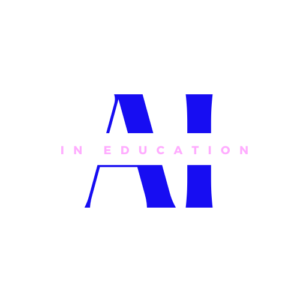
Artificial intelligence (AI) has transformed education in the past decade, and its continued growth will shape how students learn and receive support. Currently, AI is used across all education disciplines to deliver personalized learning experiences, analyze student performance, and optimize educational outcomes.
A subfield of AI that is used in education is Natural Language Processing (NLP) that uses computational models to analyze text and speech for AI to both understand human speech and communicate using human speech patterns. Students are increasingly adopting AI applications that use NLP, like chatbots, for assistive and generative purposes.
This report focuses on generative AI that uses NLP. This is a timely topic in education, as AI in education recently garnered attention with the creation of ChatGPT and Google Bard, AI-powered chatbots that can generate written responses within seconds using NLP. Through an analysis of current AI chatbots, this report will discuss current strengths and deficits and present opportunities for embedment within education. It will also focus on Chat GPT as an example for outlining the ways AI chatbots can be a threat to academic integrity and solutions to ensure ethical usage that can support student critical thinking and writing proficiency.
Monique Simmons – An Analysis of Global Teacher Education
As the world continues to become increasingly information and technology-based, there is a great need to prepare students for an international and multicultural workforce. Workers of the future will need to be globally competent, innovative, and able to understand the necessity of having diverse perspectives. By exposing students to diverse cultural experiences and opportunities to collaborate with individuals who have different perspectives, they will have the skills to respond to current worldwide issues and succeed in a diversified workplace. Global Education incorporates learning about different cultures, geography, and histories to create connections abroad to develop global citizens. Global Education fosters an intercultural perspective on critical world issues and educators play a vital role in developing cross-cultural competency and knowledge for students.
In this report, an overview of the Global Education industry will be provided before a detailed analysis of the Fulbright Teachers for Global Classrooms program. The overview will highlight trends in Global Education and the analysis will consist of reviewing the different components of the program and their effectiveness in transforming classroom teachers into better global educators. It will conclude with recommendations for growing the program based on that analysis.
Dannielle Stout – History in AR Time: An Interactive Timeline
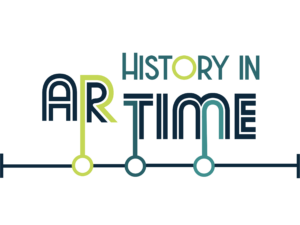
Middle and high school students are currently taught in a segmented way, with each class they take focusing on one subject and a specific set of skills. Within this structure, students are given few opportunities to combine these subjects and skills to solve problems in a cross-curricular fashion, leading to a lack of confidence and an inability for solving real-world problems. This situation is then compounded as they leave the highly structured school experience and enter institutions of higher education or join the workforce. In response, History in AR Time is a web-based interactive timeline that is designed to provide 7th-12th grade students an engaging way to combine skills and knowledge that will allow them to make more profound, meaningful connections to history while solving real-world problems.
When using History in AR Time, students enter the timeline, choose an era, and can add various layers to explore deeper learning depending on their interests or needs. Students can examine subjects like science, sports, music, math, the arts, and more to understand how all these subjects work together to create history and culture. After exploring, they can complete gamified quests that challenge them to use various skills for solving real-world problems. History in AR Time is currently in the concept phase and will be ready with an MPV in the next 6-8 months to test with small groups of students.
Julia Thompson – Teach the Teach
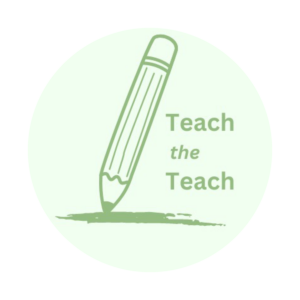
Teach the Teach is an online learning course designed to support new teachers to overcome the challenges they face in their first years of teaching. Research shows that 17% of new teachers leave the profession within the first five years of teaching, and over 40% leave within the first year. In response, Teach the Teach aims to support educators to remain committed to the classroom past those first years by developing knowledge, skills, and dispositions in various areas including effective classroom management techniques and communication strategies. Teach the Teach is about gaining knowledge and implementing innovative learning activities such as a virtual classroom simulation where educators can practice effective classroom management skills and participate in peer mentoring sessions. In the course, educators will be assessed through quizzes, reflections, and project-based assignments. Teach the Teach offers a comprehensive learning experience that encompasses real-world scenarios new educators will encounter. With the support of this module, educators will earn a digital badge, a certificate of completion, and the support to feel more confident and equipped to face the challenges of teaching and stay in the profession.
Emily Trabert – DevCred

The number of open entry-level software development positions vastly exceeds the number of software developers with Computer Science or related field degrees available to fill them. At the same time, there exists a large pool of potentially well-qualified software developers with “non-traditional” backgrounds such as military, self-taught, and community college grads. Currently, it is very difficult for these aspiring developers to land an interview. While there is some helpful advice for aspiring developers out there, such as building a coding portfolio on a platform like GitHub, recruiters do not have a sufficient technical background to assess a developer’s skills based on a portfolio. As a result, a BS in Computer Science or related field is often used as an artificial barrier to entry-level jobs. These aspiring software developers have a hard time landing interviews and getting jobs because they lack a credential that would indicate their current skill level. DevCred’s goal is to provide a credential that demonstrates to recruiters and employers the specific skills that each job candidate has – regardless of where and how they developed those skills. This will make it easier for non-traditionally-trained software developers to obtain interviews and get jobs. It will also make it easier for recruiters and employers to fill entry-level software development positions with successful candidates.
DevCred offers courses to help aspiring software developers improve their skills and study for the assessment. SOLID-ify is a free, online, video-driven, asynchronous 14-week course with 12 modules hosted on CodingRooms that teaches a software development concept called the SOLID principles. SOLID is a mnemonic of the following software design principles: single-responsibility, open-closed, Liskov substitution, interface segregation, and dependency inversion. Application of the SOLID design principles makes software code more readable, maintainable, extensible, and testable. In addition to the SOLID principles, this course teaches a “Learning to Learn” concept called “Self-Explanation”. Self-explanation can be broken down into six strategies: comprehension monitoring, paraphrasing, elaboration, logical inferences, predictions and bridging. Each of these strategies can help learners think about different aspects of their interactions with the material they are learning, leading to deeper understanding.
Karen Vaughn – Webcasts are Boring: Producing and Delivering Engaging Education to an Audience of None

In the area of adult professional education, accrediting bodies often use external experts to develop and deliver live, synchronous sessions to their membership. However, as knowledgeable as these experts are, they are not professional educators. Through a 10-module course, Webcasts are Boring: Producing and Delivering Engaging Education to an Audience of None, subject matter experts will learn to develop a short, interactive webcast that will hold their audience’s interest.
The focus of this course will be crafting a one-hour professional education session that incorporates simple instructional design techniques to deliver a solid, interesting educational session. The course will begin by helping the external expert understand the advantages and limitations of effectively presenting to live, online audiences. As the expert progresses through the course, they will meet a variety of learner personas as well as personas they may be able to call upon to help them deliver their course.
By the end of this course, the expert will be able to write learning objectives, scale material to a one-hour time frame, create engaging interactive activities, deliver a compelling piece of education, and request actionable feedback from both their audience and educational sponsor.
Yueming Wang – Analysis of China’s Study Abroad Industry
The overseas study abroad industry in China has seen a dramatic shift in the last decade. Students’ views on the choice of countries, schools and majors have changed, which has had a significant impact on the direction of companies in China’s study abroad industry. The demand for overseas study abroad services is continuing to grow and the industry is challenged with new consumer needs as compared to traditional offline service company offerings. For example, since there is less of an information gap in the internet era, Chinese students are demanding more professional services from education consulting companies. In addition to resume revision, major selection, and language test tutoring, they are also looking for assistance with internships, career planning, job hunting, and apartment rental. Services provided by online education technology companies are becoming increasingly popular with students and parents, and competition has increased across online service platforms.
This report will first introduce the study abroad industry in China, examine its overall market, and include the growth, changes, and current trends in the industry. It will also forecast future trends based on political and education policy changes. It will then shift to focus on SmartChoice Education Technology, a company that is optimized in services based on current market trends. To conclude, the report will offer recommendations to expand SmartChoice Education Technology’s market share.
Yulian Wang – Anecventure: A Reading and Speaking Solution for K12 ESL Students

Anecventure is an English language learning app that provides an engaging and effective way to improve reading speed, speaking skills, and vocabulary. The target users for the app are upper primary and middle school students from immigrant families who do not have an immersive English learning environment at home. According to the Migration Policy Institute and U.S Census Bureau, there are 44 million immigrants in the United States. Of them, 50% of them are from non-English speaking countries, and they self-reported that their English speaking skills need improvement. Additionally, immigrants are the fastest-growing segment of the nation’s population of children, and 22% of them speak a language other than English at home. Taken together, this provides a sizeable market for Anecventure, of at least 4 million potential users. Anecventure is engaging because it uses role-playing games based on world-famous literature, which can foster a love for both reading and language development. Additionally, the app’s personalized and adaptive learning design ensures that learners are challenged at an appropriate level, which can improve their learning outcomes and foster their self-efficacy in using English. By using Anecventure, learners will be able to develop a strong foundation in English language proficiency, which can enhance their communication skills, academic success, and overall readiness for living in an English-speaking country.
Zijun Wang – Tools Kit: Introduction to the External Tools for LMSs

An Introduction to external tools for Learning Management Systems (LMSs) is a course that will introduce instructors to the core functionalities of LMSs along with technologies that can be used with them. While many LMSs are available for instructors, instructors may struggle using them due to a lack of examples and suggestions for integrating and using 3rd party tools and plug-ins with their LMSs, which hampers them in creating active learning experiences for students. In response, this course will prepare instructors with the skills for maximizing their use of LMSs with 3rd party tools.
The target learners for this course are instructors who want to learn about the functions of different LMSs and how they could integrate various external tools into them. The result will be that their courses are more interactive and dynamic for learners. To complete this course, participants will do a final assignment where they will outfit their LMS with selected tools/plug-ins learned about from this course. They can then take screenshots of their LMSs where they are using the tools and explain how they are using them by creating some sort of presentation or video.
Grace Willard – Introduction to Diversity, Equity, and Inclusion in the Workplace

Introduction to Diversity, Equity, and Inclusion in the Workplace introduces users to equitable practices that they can use within the course to build an inclusive, diverse workplace. Organizations are focusing on diversity, equity, and inclusion (DEI) initiatives, but the current marketplace does not support the practical application of interpersonal skills that support these initiatives. Research has found that even Master of Business Administration (MBA) programs lack adequate interpersonal skills instruction to prepare a workforce that can work collaboratively. This course’s target users are individuals in workplaces that have adopted DEI goals and want to support these goals through learning and development programs. Users will learn about common issues that occur in workplaces, ways to resolve conflict that occurs in those contexts, and how the actions they take affect the whole workplace. users will understand basic definitions of DEI and practice specific interpersonal skills within Virtual Learning Environments using VR technology. By providing a virtual learning environment, it allows users to practice these skills through first-person perspective storytelling that adapts to their decisions through branching storylines. The goal of this immersive learning environment is to promote experiential learning and strengthen engagement in the acquisition of interpersonal skills.
Aidana Zhumabekova – The Art of Real-Time Translation
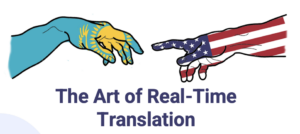
The Art of Real-Time Translation (Kazakh-English) is a course designed for undergraduate students majoring in Translation Studies. The course aims to equip learners with the necessary knowledge, skills, and dispositions to provide accurate and effective interpretation services in a real-time setting. In the course, learners will develop an understanding of interpreting techniques, cognitive and linguistic skills, professional ethics, and industry knowledge. The course will follow the “Own it, Learn it, Share it” technique, which includes engaging lectures, virtual interpretation exercises, video recordings, peer feedback, and self-assessment. Additionally, students will have the opportunity to practice with an instructor in one-on-one sessions. Upon completion of the course, learners will be prepared to provide professional interpretation services in real-time situations. They will have a solid understanding of the interpreting industry and its trends, be equipped with the skills necessary for cognitive and linguistic processing, and have a strong sense of professional ethics and standards. The Art of Real-Time Translation is built for Kazakh-English language pairs and provides an essential foundation for students seeking a career in interpretation and translation.